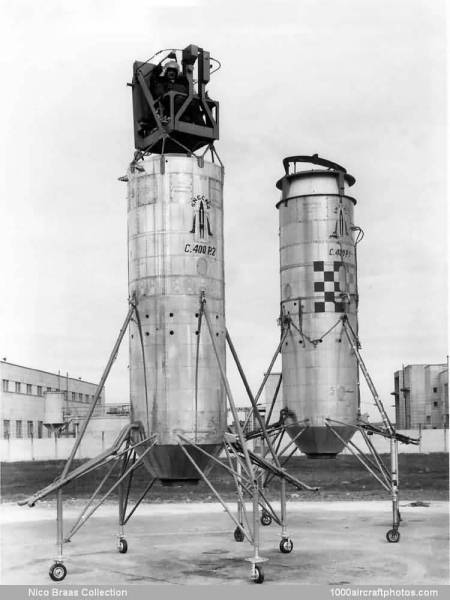09/30/2010. In 1954, following two years of initial research and development work, SNECMA (Société Nationale d'Étude et de Construction de Moteurs d'Aviation, National Company for the Design and Construction of Aviation Engines) carried out tethered flight tests with a remotely-controlled VTOL model powered by a 99 lb (45 kg) SNECMA pulse-jet engine.
These tests were made to investigate control and stability problems, and in the following year vertical rig tests of a full-scale Atar turbojet oil system and gimbal-rig tests of jet-deflection and stabilization devices were made. Construction of the full-scale C.400 was begun in 1955, and subsequently three versions were built, commonly known as Atar Volant (Flying Atar).
C.400 P.1. This pilotless remotely-controlled research vehicle comprised a 6,393 (2,900 kg) Atar 101 DV turbojet of thrust) with jet-deflection nozzle for directional control, mounted vertically inside a nacelle, on a tubular four-wheel landing gear. An annular fuel tank was fitted around the center of the nacelle, with radio control equipment above it, and the vehicle was equipped with gyroscopic control.
Tests on a gyroscopic rig were conducted in 1955, while the first tethered flight test in a specially-built gantry was made on September 22, 1956. Subsequently a total of 205 flights were made to study stabilization and the effect of wind.
C.400 P.2. This vehicle was basically similar to C.400 P.1, but was fitted with a platform above the air intake carrying the ejection seat for a pilot, instrument panel and controls. Directional control was established by jet-deviation, using jets of air bled from compressor to deflect main efflux, while lateral turning was established with air jets on the landing gear struts.
The annular tanks surround the engine compressor contained 1,102 lb (500 kg) of fuel, giving an endurance of over four minutes, weight at take off was 5,732 lb (2,600 kg). Tethered tests in the gantry began on April 8, 1957, the first free flight was made on May 14, 1957, and a total of 123 tethered and free flights were made by spring 1958.
C.400 P.3. Development of C.400 P.2 built around the 7,716 lb (3,500 kg) st Atar 101 E turbojet and with fitted with a tilting ejection seat inside enclosed cockpit. As part of the test program, this version was mounted horizontally on a railway truck with the tail-pipe facing forward and then towed at speeds between 25 and 50 mph (40 and 80 kmh), to test the effect of airflow on the jet stream during a simulated rapid vertical descent.
